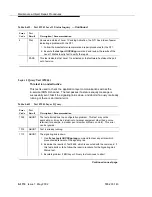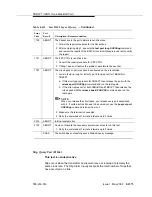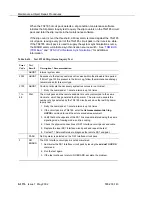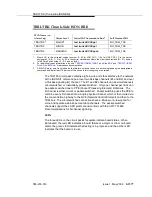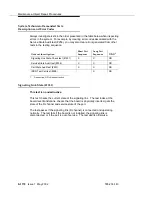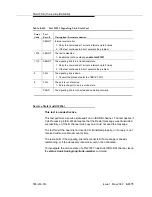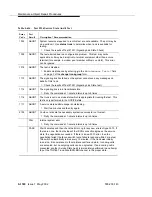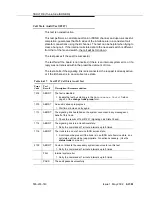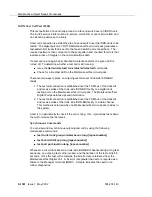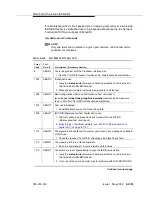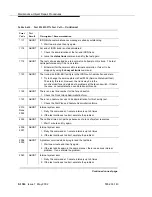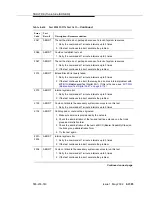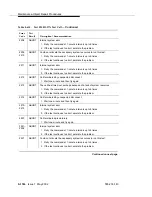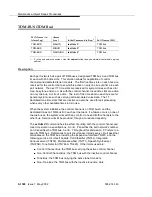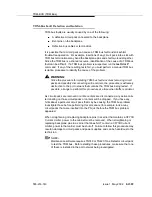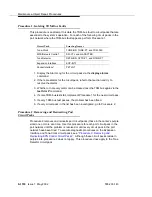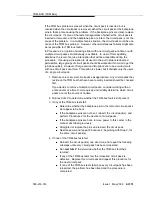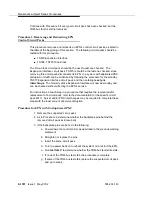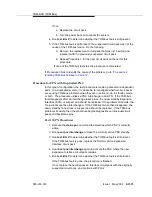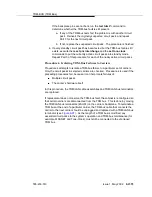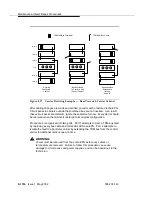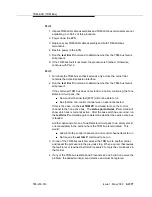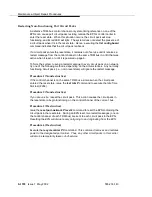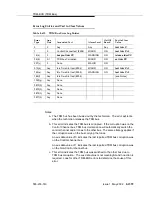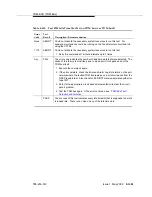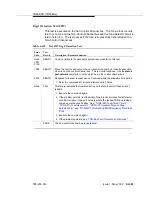
Maintenance-Object Repair Procedures
555-233-143
8-1588
Issue 1 May 2002
TDM-BUS (TDM Bus)
Description
Each port network has a pair of TDM buses, designated TDM bus A and TDM bus
B, each with 256 time slots. This division allows for duplication of control
channels and dedicated tone time slots. The first five time slots on each bus are
reserved for the control channel, which is active on only one bus at a time in each
port network. The next 17 time slots are reserved for system tones such as dial
tone, busy tone and so on. As with the control channel, these time slots are active
on only one bus, A or B, at a time. The rest of the time slots on each bus are for
general system use such as carrying call-associated voice data. The 17
dedicated tone time slots that are inactive can also be used for call processing
when every other available time slot is in use.
When the system initializes, the control channel is on TDM bus A and the
dedicated tones on TDM bus B in each port network. If a failure occurs on one of
the two buses, the system will switch any control, tone and traffic channels to the
other bus. Service will still be provided, though at a reduced capacity.
The set tdm PC command has the effect of putting both the control channel and
tone time slots on a specified bus, A or B. P specifies the port network’s number,
and C specifies the TDM bus, A or B. Throughout this discussion, PC refers to a
specific TDM bus. References to port circuit packs include every circuit pack that
terminates on the TDM bus, including the Expansion Interface TN570, and the
following service circuit port boards: Call Classifier (TN744), Integrated
Announcement (TN750), Maintenance/Test (TN771), Speech Synthesizer
(TN725B), Tone Detector (TN748 or TN420). Other terms used are:
■
Control Channel Bus: the TDM bus carrying the active control channel
■
Non-Control Channel Bus: the TDM bus with the inactive control channel
■
Tone Bus: the TDM bus carrying the active tone time slots
■
Non-Tone Bus: the TDM bus with the inactive tone time slots
MO’s Name (in
Alarm Log)
Alarm
Level
Initial Command to Run
1
1.
P is the port network’s number. Use list cabinet to find the port network(s) contained in a given
cabinet.
Full Name of MO
TDM-BUS
MAJOR
test tdm P
TDM bus
TDM-BUS
MINOR
test tdm P
TDM bus
TDM-BUS
WARNING
test tdm P
TDM bus
Summary of Contents for S8700 Series
Page 50: ...Maintenance Architecture 555 233 143 1 26 Issue 1 May 2002 ...
Page 74: ...Initialization and Recovery 555 233 143 3 12 Issue 1 May 2002 ...
Page 186: ...Alarms Errors and Troubleshooting 555 233 143 4 112 Issue 1 May 2002 ...
Page 232: ...Additional Maintenance Procedures 555 233 143 5 46 Issue 1 May 2002 ...
Page 635: ...status psa Issue 1 May 2002 7 379 555 233 143 status psa See status tti on page 7 406 ...
Page 722: ...Maintenance Commands 555 233 143 7 466 Issue 1 May 2002 ...

